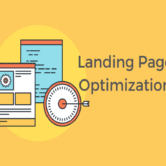
Detail how to align content with user search intent
INTRODUCTION
In the world of digital content, aligning your writing with user search intent is the key to visibility, relevance, and conversions. When users type a query into a search engine, they’re seeking something specific—information, a product, a comparison, or a solution. Understanding and addressing that underlying intent is what transforms a piece of content from simply “informative” to “effective.” Here’s how you can decode user search intent and craft content that directly meets those needs, keeping both users and search engines happy.
UNDERSTAND THE THREE TYPES OF SEARCH INTENT
User intent generally falls into three categories: informational (seeking knowledge), navigational (seeking a specific website), and transactional (intending to take an action, such as buying). Before creating content, identify which category your target keyword or topic belongs to. This classification informs the structure, tone, and depth of your content.
START WITH STRATEGIC KEYWORD RESEARCH
Use tools like Google Search Console, SEMrush, or Ahrefs to find keywords your audience is using. But go beyond volume—analyze the context of the keyword. Are users trying to learn, compare, or buy? Look at the top-ranking pages for that keyword to infer intent based on their content structure and messaging.
MAP CONTENT TYPES TO INTENT
Once you know the intent, align your content format accordingly. For informational intent, create blog posts, how-to guides, or infographics. For navigational queries, ensure your homepage or product pages are optimized. For transactional intent, landing pages, product comparisons, and case studies work best to drive conversions.
ANALYZE SERP FEATURES FOR CLUES
Search Engine Results Pages (SERPs) provide insights into what users expect. Featured snippets, “People Also Ask” boxes, video results, and top stories can guide you on how to structure and enrich your content to meet intent more precisely.
USE HEADLINES AND INTROS THAT MATCH EXPECTATIONS
Ensure your headline and opening paragraph immediately confirm to the reader that they’re in the right place. A mismatch between intent and intro leads to high bounce rates. Use keywords naturally and hint at the value the reader will gain by staying on the page.
DELIVER VALUE FAST AND STAY ON TOPIC
Avoid long-winded introductions or off-topic tangents. Respect the user’s time by addressing their query within the first few lines and then expanding as needed. Use subheadings, visuals, and bullet points to enhance clarity and keep the reader engaged.
INCLUDE CTAS THAT ALIGN WITH INTENT
If someone is reading an informational article, a hard-sell CTA may feel intrusive. Instead, offer a downloadable guide or suggest another related post. On transactional pages, use clear, action-driven CTAs like “Buy Now” or “Get Your Free Trial.”
UPDATE AND OPTIMIZE BASED ON PERFORMANCE
Monitor metrics like dwell time, click-through rates, and bounce rates to assess whether your content meets user expectations. If engagement is low, the intent alignment may be off. Refresh and restructure the content to better serve the user’s journey.
EMBED USER QUESTIONS AND NATURAL LANGUAGE
Use long-tail keywords and natural phrasing to match how users actually search. Tools like AnswerThePublic or Google’s autocomplete help you find these queries. Embedding common user questions within your content helps improve both SEO and usability.
MATCH TONE AND DEPTH TO AUDIENCE NEEDS
A beginner-level query requires simple explanations, while a technical audience may expect depth and jargon. Tailor your content’s tone and complexity based on the user’s knowledge level as inferred from the query.
CONCLUSION
Aligning content with user search intent isn’t a one-size-fits-all process—it’s about empathy, analytics, and strategic execution. When your content directly addresses what the user is looking for, you earn their trust, improve your search rankings, and increase your chances of conversion. In a crowded digital space, intent-driven content is your competitive edge.
HASHTAGS
#SearchIntent #UserIntent #ContentStrategy #SEOContent #ContentMarketing #SearchEngineOptimization #DigitalMarketing #ContentCreation #InboundMarketing #KeywordStrategy #SERPOptimization #SEOtips #ContentThatConverts #ContentAlignment #UXWriting #InformationalContent #TransactionalContent #NavigationalIntent #MarketingTips #ContentPlanning #SEOAlignment #SearchIntentOptimization #OrganicSearch #BloggingTips #ContentPerformance





